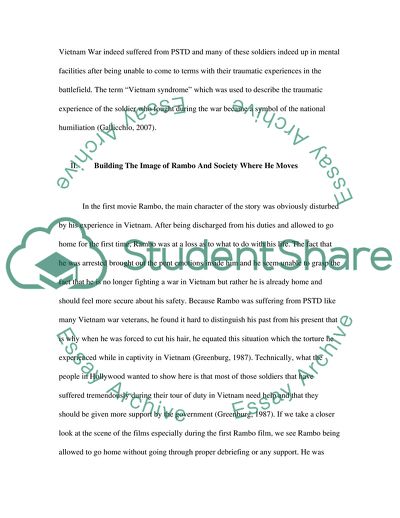Cite this document
(The Story of Rambo Movie Review Example | Topics and Well Written Essays - 1250 words, n.d.)
The Story of Rambo Movie Review Example | Topics and Well Written Essays - 1250 words. https://studentshare.org/visual-arts-film-studies/1734852-the-movie-rambo-in-terms-of-analyzing-hollywood-and-post-vietnam-representations-of-the-military
The Story of Rambo Movie Review Example | Topics and Well Written Essays - 1250 words. https://studentshare.org/visual-arts-film-studies/1734852-the-movie-rambo-in-terms-of-analyzing-hollywood-and-post-vietnam-representations-of-the-military
(The Story of Rambo Movie Review Example | Topics and Well Written Essays - 1250 Words)
The Story of Rambo Movie Review Example | Topics and Well Written Essays - 1250 Words. https://studentshare.org/visual-arts-film-studies/1734852-the-movie-rambo-in-terms-of-analyzing-hollywood-and-post-vietnam-representations-of-the-military.
The Story of Rambo Movie Review Example | Topics and Well Written Essays - 1250 Words. https://studentshare.org/visual-arts-film-studies/1734852-the-movie-rambo-in-terms-of-analyzing-hollywood-and-post-vietnam-representations-of-the-military.
“The Story of Rambo Movie Review Example | Topics and Well Written Essays - 1250 Words”. https://studentshare.org/visual-arts-film-studies/1734852-the-movie-rambo-in-terms-of-analyzing-hollywood-and-post-vietnam-representations-of-the-military.


